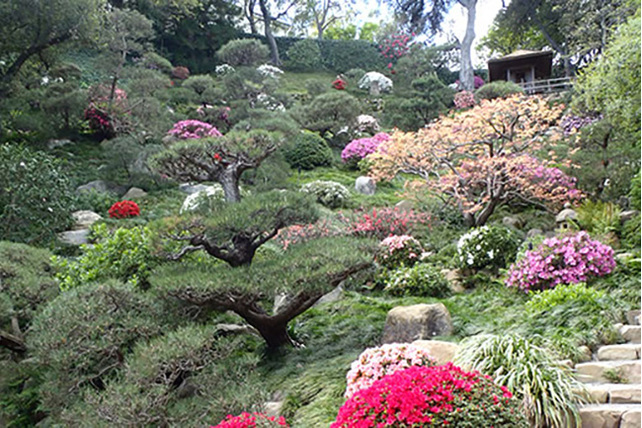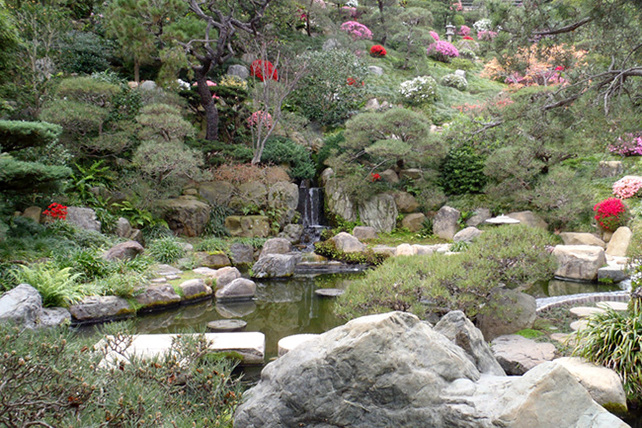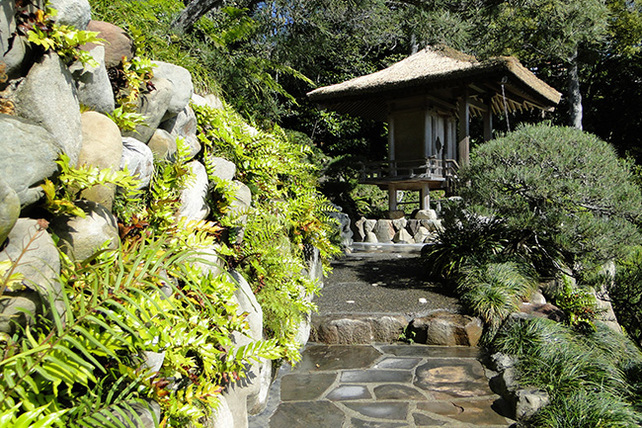Hannah Carter Japanese Garden
This beautiful hillside garden in the Bel Air neighborhood of Los Angeles is a leading example of a residential Japanese-style garden in America. It embodies the rich legacy of Japanese landscape design with an emphasis on water, stones, and evergreen plants in a naturalistic setting. Designed by noted Japanese garden designer Nagao Sakurai and created in the period after World War II, it represents an important chapter in the history of Japanese garden design and Asian culture in North America and southern California.
2017
In January, the Garden Conservancy submits letter supporting designation of garden as a Los Angeles Historic-Cultural Monument. In April, both the house and the garden are designated official landmarks.
2016
Mark Gabay purchases the house and garden
The Los Angeles Conservancy nominates garden for designation as a Los Angeles Historic-Cultural Monument
2015
The Hannah Carter family's lawsuit against the University of California, Los Angeles (UCLA) is settled, allowing the garden to be sold together with the adjacent house and ensuring that the gardens would be preserved for the next 30 years
2012
In January, the Garden Conservancy, the California Garden and Landscape History Society, and other concerned organizations and individuals organize a public meeting in Los Angeles to discuss the threats to the garden
A coalition of national, regional, and local organizations forms after the neighborhood meeting in January and mounts a campaign to Save the Hannah Carter Japanese Garden, including an online petition, website, and other publicity
In July, the Hannah Carter files a lawsuit against UCLA for breach of donor intent
2011
UCLA announces plans to sell the garden
1964
UCLA is deeded the garden by Edward Carter, who named the garden in honor of his wife, Hannah Carter
1959
Noted Japanese garden designer Nagao Sakurai designs the one-and-a-half-acre garden modeled on the gardens of Kyoto







